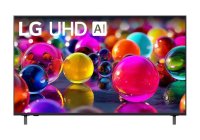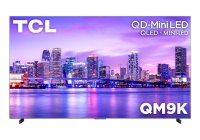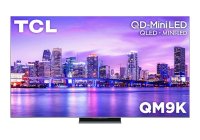Why Won’t My TV Recognize USB Drives? Troubleshooting USB Connectivity
Introduction
It’s frustrating when you plug in a USB drive into your TV, and it doesn’t get recognized. Whether you’re trying to watch a movie or access photos, many users face this common issue. There are several reasons why your TV might not be detecting your USB drive. Let’s go through some troubleshooting steps to fix this problem.
Common Reasons for USB Drives Not Being Recognized
Incompatible USB Format
Most TVs support USB drives formatted in FAT32 or exFAT file systems. If your USB drive is formatted in NTFS or another unsupported file system, the TV may fail to recognize it.Faulty USB Drive or Port
The issue might lie with the USB drive itself or the TV’s USB port. Sometimes, dust, dirt, or damage to the port can prevent proper connectivity.Power Issues
If you’re using an external hard drive, it might require more power than what the TV’s USB port can provide. In such cases, the drive won’t be recognized unless it has an independent power supply.Outdated TV Software
An outdated TV firmware or software could cause compatibility issues with newer USB drives. Ensure that your TV’s software is up to date.Device Compatibility
Some TVs may not support larger drives (over 2TB) or certain types of USB devices.Excessive File Size or Unsupported File Type
If your USB drive contains files that exceed the TV’s supported size or are in a format that the TV cannot read (such as specific video codecs), the TV might fail to detect the drive.
Quick Fixes to Get Your TV to Recognize USB Drives
Check the USB Format
Ensure your USB drive is formatted in FAT32 or exFAT. If your drive is in NTFS or another format, back up the data and reformat it using your computer.Try a Different USB Port
Test different USB ports on your TV to rule out the possibility of a faulty port. Some TVs have multiple USB ports, and using a different one might solve the issue.Test the USB Drive on Another Device
Plug the USB drive into a computer or laptop to check if the drive is working properly. If the drive doesn’t work on another device, the issue is with the drive itself, not the TV.Use a Powered USB Hub
If you’re using an external hard drive, try connecting it through a powered USB hub to ensure it gets enough power.Update TV Firmware
Go to your TV settings and check if there’s a firmware update available. Updating your TV’s software can fix compatibility issues and improve USB connectivity.Reduce the Size and Type of Files
Make sure the files on your USB drive are supported by your TV. If they are too large or in an unsupported format (e.g., unsupported video codecs), try converting them to a compatible format or reduce their size.
Advanced Troubleshooting Steps
Format the USB Drive
If the USB drive is still not recognized, try reformatting it in FAT32 or exFAT on a computer. Remember, formatting will erase all data, so back up your files first.Check for USB Compatibility
Some TVs only support specific types of USB drives or have a maximum capacity limit. Refer to your TV’s user manual to ensure the USB drive is within the supported size and type.Disconnect Other Devices
If there are other USB devices connected to your TV, disconnect them to see if the TV can recognize the USB drive when it’s the only device connected.Use a Different USB Drive
Try using a different USB drive to check if the problem is with the original drive. This can help confirm whether the issue lies with the drive or the TV.
Conclusion
If your TV isn’t recognizing your USB drive, it could be due to compatibility issues, incorrect formatting, or faulty hardware. By checking the format of your USB drive, updating your TV’s firmware, and ensuring all connections are working correctly, you can usually fix the issue and enjoy your content without any problems.



